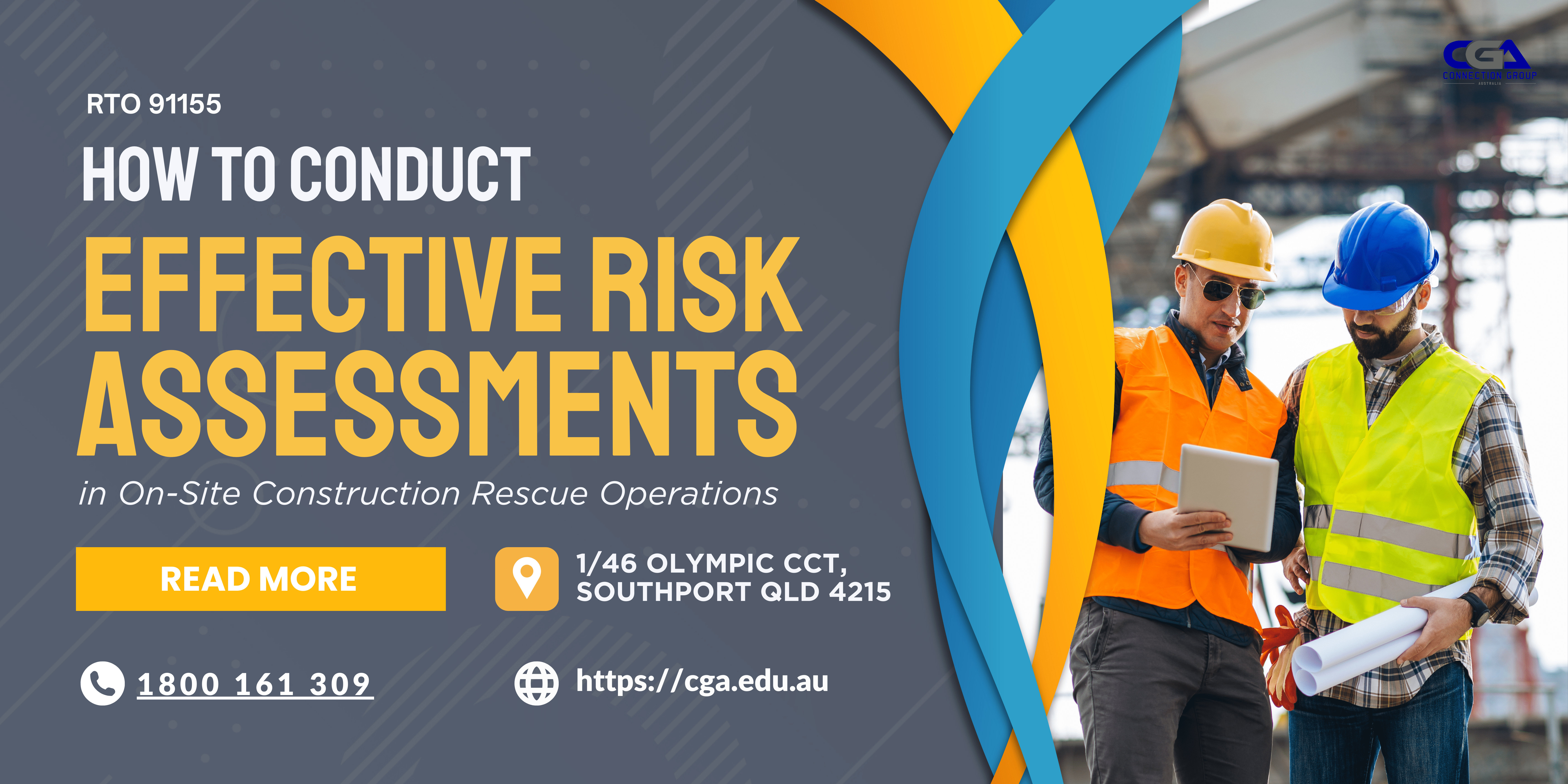Each year, workplaces bear witness to accidents and unforeseen incidents, emphasizing the critical importance of preparedness and swift action in rescue operations. In the busy landscape of on-site construction, the potential for mishaps is inherent, demanding a meticulous approach to risk assessment and proactive measures to ensure the safety of every individual on site. Amidst the whirlwind of construction activities, the ability to conduct effective risk assessments becomes paramount—a skill that not only anticipates potential hazards but also paves the way for proactive strategies and swift responses.
The dynamic nature of construction sites, with their intricate machinery, shifting environments, and varied operations, necessitates a comprehensive risk assessment framework. Within this context, the ability to navigate through potential hazards, anticipate risks, and orchestrate a well-coordinated rescue operation stands as a fundamental pillar in ensuring the safety of workers and bystanders.
In this guide, we delve into the meticulous process of conducting effective risk assessments specific to on-site construction, focusing on the nuances and strategies tailored for proficient rescue operations.
Key Strategies for Effective On-Site Rescue Operations
Comprehensive Site Evaluation: Commence by thoroughly surveying the construction site to discern potential hazards and anticipate any risks that might arise during rescue operations. A detailed evaluation helps in proactively identifying dangers and devising effective strategies for mitigating them.
Incorporating Scenario-Based Assessments: Implement scenario-based risk assessments to simulate a diverse range of emergency situations. This approach allows for tailored rescue plans that are specifically designed to address each potential scenario, enhancing preparedness and efficiency during actual rescue operations.
Regular Updates and Adaptations: Maintain a continuous process of updating risk assessments to align with the evolving construction environment and any alterations in rescue procedures. Regular updates ensure that the assessment remains accurate and relevant, accounting for new risks and changing site conditions.
Collaborative Risk Assessment Approach: Engage the expertise of all on-site personnel in the risk assessment process. By involving diverse perspectives, you can identify potential hazards more comprehensively and develop well-rounded strategies for risk mitigation.
Strategic Mitigation Strategies: Develop and implement strategic measures to mitigate identified risks effectively. This includes providing adequate training, establishing clear communication channels, and ensuring accessibility to necessary equipment, fostering a safer work environment.
Mock Rescue Exercises: Regularly conduct mock rescue drills to validate the effectiveness of risk assessments and rescue plans. These exercises not only serve as practical training opportunities but also instil a culture of readiness and responsiveness within the team.
Documentation and Evaluation: Maintain meticulous documentation of risk assessments, revisions, and evaluation reports. This documentation serves as a record of progress and allows for a comprehensive analysis of past experiences, enabling continuous improvement.
Continuous Training and Skill Enhancement: Ensure ongoing training sessions and skill enhancement programs for the team to keep them updated with the latest rescue techniques and hazard management strategies.
Risk Review Post-Operations: Conduct comprehensive reviews of risk assessments following each rescue operation. This post-operation evaluation helps in identifying any unanticipated risks encountered during the rescue and refining future assessments accordingly.
Emphasis on Communication Protocols: Establish and prioritize robust communication protocols to ensure the clear and prompt dissemination of risk assessment findings and rescue strategies among the entire team. Effective communication is vital in executing successful rescue operations and enhancing overall safety on-site.
Ready to enhance safety on your construction site? Explore our comprehensive on-site rescue operations training to equip your team with the skills needed to conduct effective risk assessments and ensure a secure work environment. Take the first step towards safer operations today!

